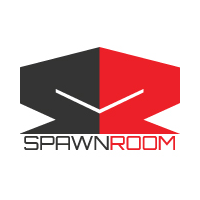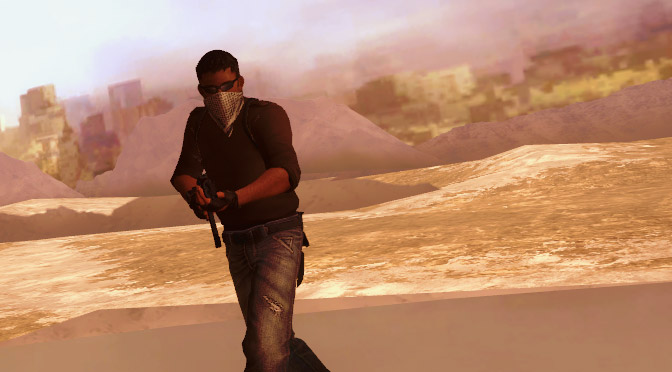When I was actively creating YouTube content I produced a series called Behind the Play which reviewed strategy and tactics in competitive games. Here are the notes from studying Counter-Strike: Global Offensive:
Suppression
Remember with CS:GO, things like suppression fire and pressuring don’t work as obviously in something like LoL or Dota 2 where you can deny farming. But they DO exist. You can suppress and pressure enemies out of areas to buy time for bomb plants or save allies.
Advantages
Highly skilled players must recognize a running calculation that determines their team advantage. The higher the skill, the more this mindset is considered. Kills are the most obvious form of advantage, but there are many exploitable options in CS:GO. For example, if you can afford 1 second of suppression fire, that is better than 0 seconds. Even if the advantage gained is minuscule, a well synergized team can exploit it or enact other actions that stack a growing advantage for your team. For instance, 1 second of suppression may be long enough for a vulnerable teammate to switch from a grenade back to his rifle to better protect himself. Or drawing fire because you’re at a further range or not in possession of the bomb.
Movement Advantages - It’s important to take note of where players move from the spawn position. Once a route is selected it is rarely changed because lost time equates to better timing and positioning for the enemy (same with indecision). Although if done intentionally it can confuse the enemy team as long as your players are positioned correctly.
Timing Advantages - Choosing your timing for particular strats are incredibly important. At higher levels of play, and even inadvertently at lower levels, timing of just 1-3 seconds can completely change a round. For example, a split rush on bombsite B on dust2: if the terrorists in tunnel begin their attack at the right moment, the CT watching mid will turn his back to reinforce his ally who’s just called for help. Done correctly, the terrorist at mid will enter just as the CT becomes vulnerable, taking an easy kill and helping secure B. However, if the tunnel Ts are delayed by even a second or two, the CT at mid will see the T coming, NOT turn his back and level the playing field in terms of who wins the gunfight. Now B cannot be secured in a timely manner because the mid CT may live to delay the bomb plant, which in turn allows CTs from A to reinforce faster, along with denying positioning advantages for the Ts.
Awareness Advantages - An important aspect of this game is positioning, you need to dynamically cover positions as the variables change. Starting with 5 players, you take your initial positioning and begin gathering intel. Based on enemy movements, you begin your adjustments to counter whatever it is they’re doing. When engagement occurs it is often very easy to get caught up in the physical confrontation, but it’s equally important to keep a running record of variable changes so you can continue adjusting your strategy. Failure to do so will place your team at a running disadvantage. It’s useful to develop a pattern for eye movement, frequently glancing around the screen to gather intel (minimap and ammo count).
Positioning Advantages - There are also positioning advantages to take into account when performing a “mixed buyâ€. This means a couple of “wealthier†teammates are heavier weapons, while the rest save. The point being that the heavier weapons are placed in key positions (strong positions) where they can secure kills or at least suppress enemies (defend plants, etc.). They are also placed in positions where teammates can easily recover the weapon should the teammate die. Here is the full explanation via Reddit user btattersall:
“Firstly you would need to be playing with a TEAM that knows what is happening and how to coordinate their positioning. The point of a buy like that is to put a heavy weapon in two key positions (likely bombsites, or adjacent) and to ensure that your teammates can recover the weapon before the other team does. Probably makes most sense when you have two people who are hard-fragging, and three who are lower on cash and kills. The two who are juiced with kill cash make the buy, distribute the weapons as necessary, and even up the economy for the whole team, so they can make the rest of their decisions together. The rifles take a longer-range sightline with good cover, and the others play closer positions with nades to try and bait the other team into over extending where they don’t realize there is a heavy weapon. Not easy to pull off, even if you have practiced the strategy, but might be able to win you a marginal round if the other team is caught off guard, but at worst your economy levels out and you are able to run your standard save or buy strats which you have probably practiced more.â€
Weapons and Economy
Conservation of Ammo and Reloading - Don’t worry about conserving ammo. Utilize suppression fire and pre-fire techniques because you will rarely run out of ammo. Additionally, don’t reload unnecessarily or at inappropriate times. It can be somewhat compulsive to keep your gun stocked with bullets, but frequent reloading at inopportune times will only result in a disadvantage.
Spray Patterns -Â Keep control of your firearm by either firing rounds manually or controlling spray patterns. Understand how each gun fires in rapid succession so you can maximize the statistical likelihood that your rounds make contact.
Headshots - Aim for the head. This may sound obvious, but in Counter-Strike it is especially important. In other games, the penalty for body shots first, is less, but in Counter-Strike it is steep. Professional and even just moderately skilled players will generally place their first round as a headshot. If you are aiming for the chest, which may seem intuitive since it’s a larger target, you will be placed at a severe disadvantage.
Grenades - Decoy grenades emit a gun shot sound to trick enemies, exploding at the end of its lifespan. Grenades also have a variety of strategies attached to them. They can delay rushes, distract enemies, and bait rotations. They can also cause enemies to fire their weapons in response which can reveal how many enemies are in a certain area.
SMGs - SMG buys need to be more strategic than simply “I don’t want to, or can’t, buy a rifle, so I’ll get an SMGâ€. Instead coordinate with your team, the rifle buys should position themselves in stronger, more advantageous positions while the SMG buys float or play more aggressively. The point being that they are the first to get killed, BUT weaken the enemy team. The rifle positioning should be further back to cover bomb sites and finish off the enemy players who’ve been weakened by SMG fire. It’s also important that the rifles don’t get dropped early on, or far up, for the enemy team to pick up and use. Your team should try and recover the rifles because they are in good positions to do so. So for someone in my position of playing support / clutch, I should almost always have a rifle. You can also bait with SMGs to draw enemies into your riflers. These strategies also level out your economy by having high income players distributing rifles to low income players.
Miscellaneous
The bomb carrier can force a commitment if he dies with the bomb in a bad location.
Grouping too closely increases a single enemies chance of each round hitting an enemy player.
When it’s hopeless (1-v-5), your objectives are different:
- Kill anyone because it forces a buy.
- Plant the bomb for money ONLY.
If the enemy knows where you are, then you can safely exploit suppression fire (if they didn’t, doing so would reveal your position):
- For instance, in dust2 tunnels, you could suppress the stairs if you need to buy a few seconds before rushing into bombsite B.
- The reason suppressing fire doesn’t work a lot is because it’s either better to just go for the kill (camp the stairs), most situations don’t allow for it (you’re already in the bombsite), grenades are better for this, and it reveals your position.
On anti-eco rounds (2nd round after a 1st round win), hold longer positions so you can’t get killed by a pistol and instead gather intel. Hold back, see where the enemy is weak, get picks, and then move out. The reason for this is because CTs like to stack after a 1st round loss which means one side of the map is super weak and one side is really strong. Find the weak one, call it and rotate.
Having a lurker is good and the position can change depending on the rotate:
- For instance, on dust2, a long A push could have a lurker in lower tunnels watching for the flank (cat walk, mid push towards spawn-long A).
- Another example would be a long A scout that reveals a stack on long A. The team rotates towards B but leaves 1 guy at long/mid to lurk and watch for flanks.
- Basically this role is:Â unpredictable, camps, ambushes, stops/delays flanks, etc.
When pushing a bombsite it’s important to have proper spacing and positions for your teammates. Having the bomb carrier and an escort rush up while 2 hold further back for support, allows the support riflers not to get flashed and grenaded by incoming CTs. That way if the rushing T’s get lit up or blinded, they aren’t immediately killed because the support riflers can lay down fire and get picks.
Remember, along with not worrying about ammo count and just laying down fire, you should also be using your grenades. If you’re dying with them then you’re basically losing out on some serious potential advantages. It’s much better to use them and increase your odds of winning because they’re relatively cheap. The potential gain is thousands of dollars while the potential loss is only hundreds.

